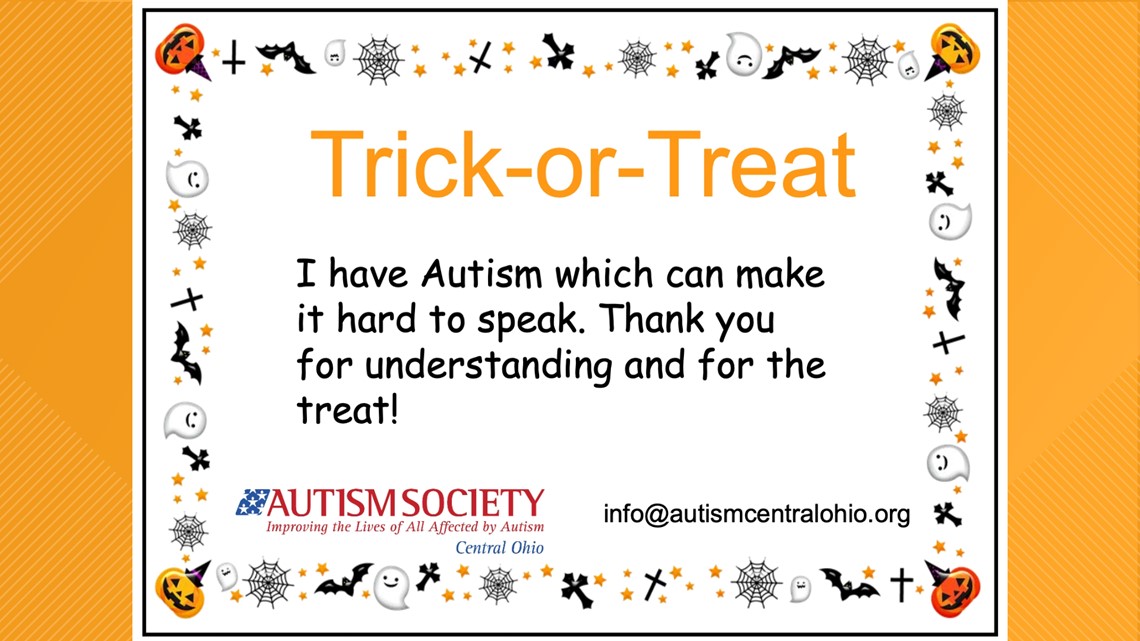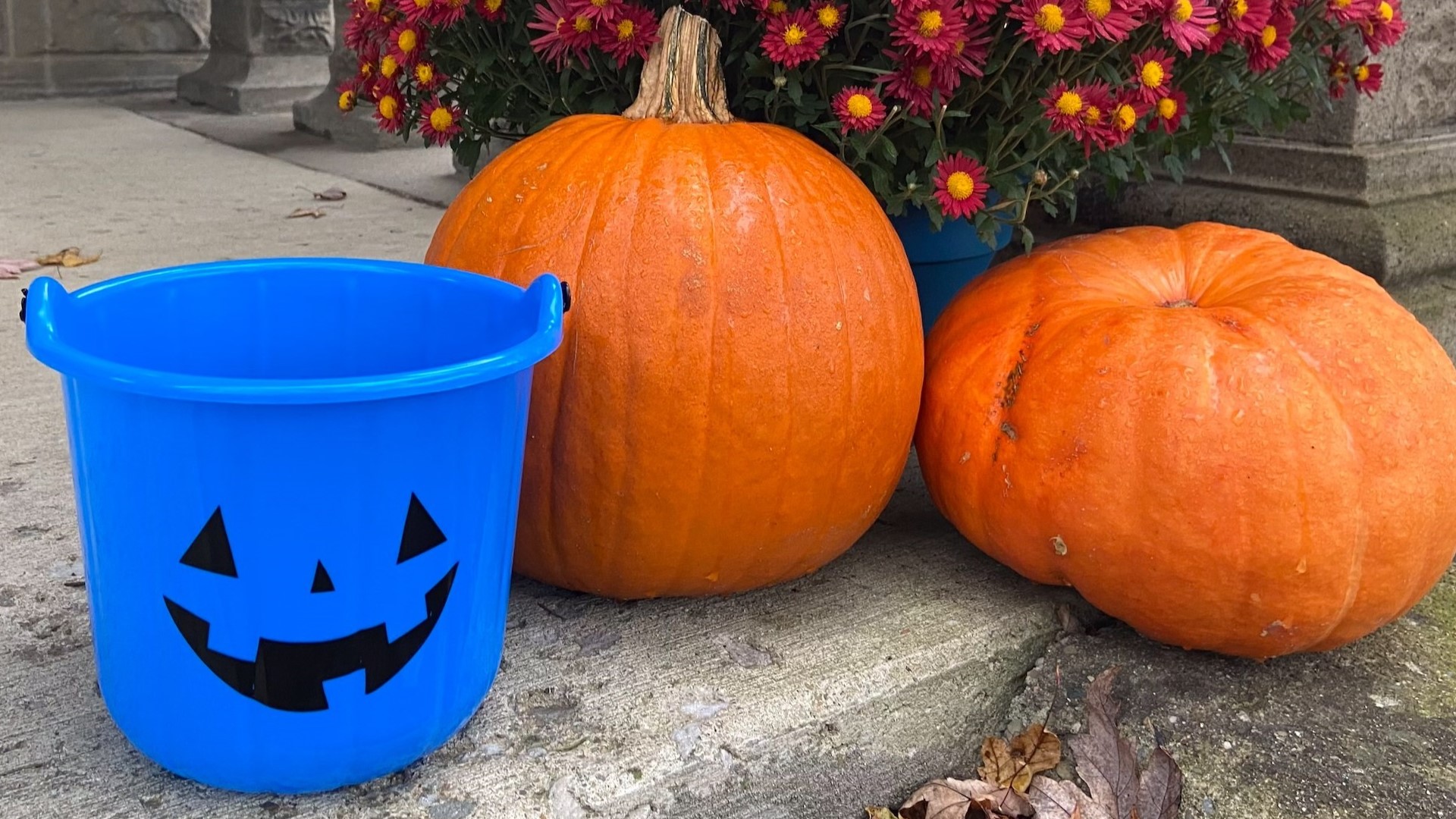COLUMBUS, Ohio — Children across central Ohio are preparing for a night of trick-or-treating while some parents are reminding others about various abilities among children.
Laura Baird is the board president of the Autism Society of Central Ohio. She has a 7-year-old with Autism.
Baird said her son will not be participating in the candy-receiving day this year.
“He doesn’t want to be in the crowd. He doesn’t really know how to interact with the people, with other kids in costume. It’s kind of scary for him even if we explain it ahead of time,” Baird said.
However, there will be children trick-or-treating who do have autism.
One way parents communicate to people handing out candy that their children has autism is by the child carrying a blue pumpkin bucket. The blue pumpkin bucket is a symbol that the child carrying it may have autism.
While Baird's son will stay home this year, other children with similar disorders might still want to participate. Baird said there are a few things those handing out candy should keep in mind when interacting with children.
“They may have sensory issues and they don’t want to wear a costume, but they still want to go trick-or-treating. Or, they have fine motor delay so they can’t grasp one piece of candy, or they’re an older teenager or adult who wants to go trick-or-treating and has a developmental disability,” she said.
Baird said she knows a young man who is identified as an adult and only recently stopped trick-or-treating because of a developmental delay.
“He wanted to go trick-or-treating because it was fun for him and it was something he enjoyed. So that might be something people encounter when handing out candy,” she said.
Baird said it’s important for those handing out candy to be mindful and considerate in these situations. For parents who have children with disabilities or who might be shy, talk with them about their comfort levels beforehand.
“Don’t push your kids. If they don’t want to trick-or-treat or if you just want to go to a neighbor’s house or go to the people you know, then that’s somewhere you can start that is small and work up,” Baird said.
Signs can also be printed off or taken around your neighborhood with you to help others understand where your child is coming from. Check out this sign below:



